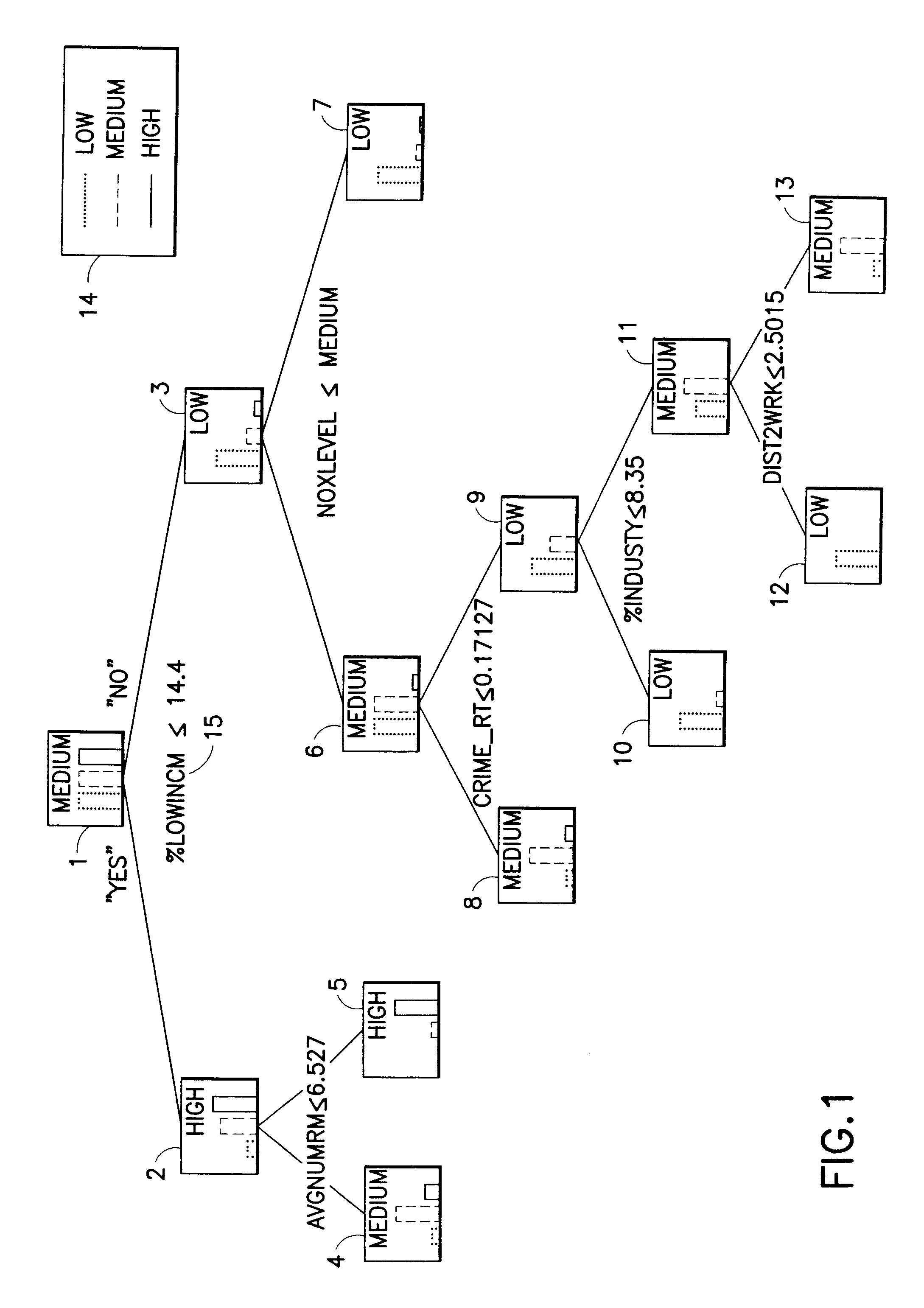Method for constructing segmentation-based predictive models
a predictive model and segmentation technology, applied in the field of computer databases, can solve the problems of inconvenient generation of predictions for intended applications, limited benefit of standard computer-based statistical and analytical packages, and significant problems, etc., and achieve the effects of reducing the number of steps of applying the model to generate predictions, and reducing the number of steps of applying the model
- Summary
- Abstract
- Description
- Claims
- Application Information
AI Technical Summary
Benefits of technology
Problems solved by technology
Method used
Image
Examples
first embodiment
[0186]A first embodiment for block 151 of FIG. 15 is now disclosed. This embodiment selects a subset of tree nodes and alternative models for each selected node so as to minimize the sum of the ValFit values for the selected alternative models. This embodiment is a generalization of reduced error pruning (see, for example, J. R. Quinlan, “Simplifying decision trees,”International Journal of Man-Machine Studies, Vol. 27, pp 221-234, 1987; J. R. Quinlan, C4.5: Programs for Machine Learning, Morgan Kaufmann Publishers, San Mateo, Calif., 1993). The embodiment differs from the known method of reduced error pruning by considering alternative models for each node in the tree, whereas the known method assumes that exactly one model has been constructed for each node. The embodiment disclosed below also differs in that it optimizes a more general measure of predictive accuracy (i.e., ValFit), whereas the known method of reduced error pruning simply optimizes the number of incorrect predicti...
second embodiment
[0204]block 151 of FIG. 15 begins at block 201 of FIG. 20. At block 201, a generalized tree is recursively traversed in order to group subtrees (i.e., subsets of nodes) and alternative models according to the degrees of freedom utilized, and to simultaneously select one subset of nodes and alternative models from each group so as to minimize the resulting TrainFit score for each selection. The degrees of freedom of each subset of nodes and alternative models are calculated based on the DegFree values of the alternative models as illustrated in Table 3, and on optional adjustments that reflect the degrees of freedom of the resulting segmentation.
[0205]The results of block 151 can be represented in tabular form as illustrated in Table 4 below. In this example, selected subsets of nodes and associated alternative models are represented as sets of ordered pairs. Each order pair comprises a reference (i.e., a pointer, index number, etc.) to a node in the tree being pruned together with a...
PUM
 Login to View More
Login to View More Abstract
Description
Claims
Application Information
 Login to View More
Login to View More - R&D
- Intellectual Property
- Life Sciences
- Materials
- Tech Scout
- Unparalleled Data Quality
- Higher Quality Content
- 60% Fewer Hallucinations
Browse by: Latest US Patents, China's latest patents, Technical Efficacy Thesaurus, Application Domain, Technology Topic, Popular Technical Reports.
© 2025 PatSnap. All rights reserved.Legal|Privacy policy|Modern Slavery Act Transparency Statement|Sitemap|About US| Contact US: help@patsnap.com



